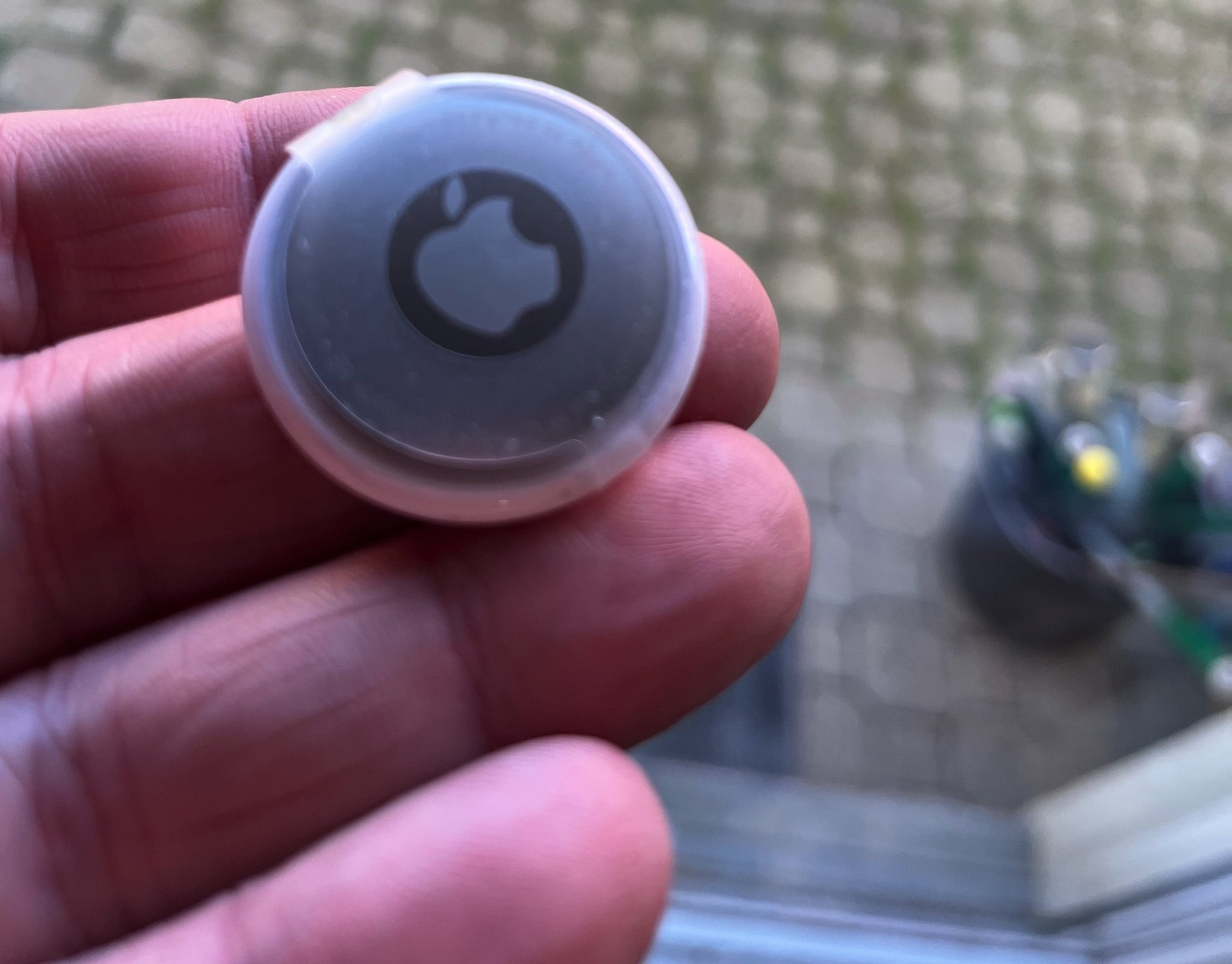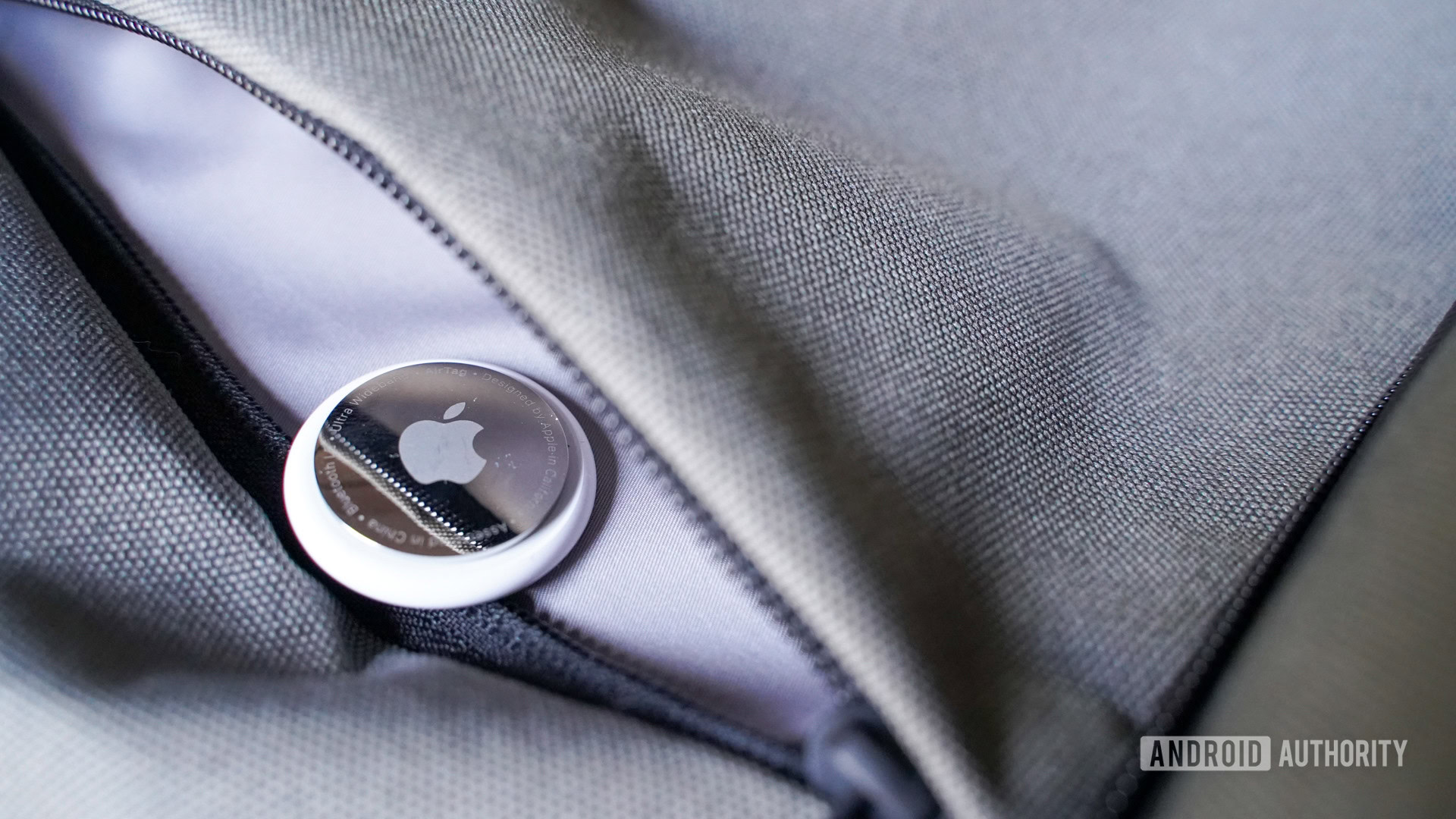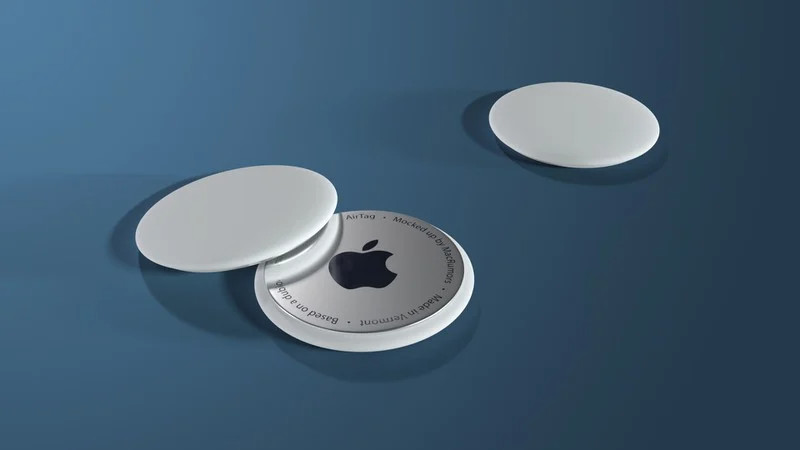Affiliate links on Android Authority may earn us a commission. Learn more.
How to set up an Apple AirTag and start using it
Published onApril 28, 2023
Although Apple wasn’t the first to pioneer tracking tags, the AirTag is still a handy invention, since you can attach it to everything from keyrings and luggage through to electric skateboards to prevent them from getting lost. Here’s how to set up an Apple AirTag and start using it.
QUICK ANSWER
To set up an Apple AirTag:
- Remove the protective wrap and tab, and bring it right next to the iPhone or iPad you want to pair it to.
- A pop-up window will tell you an AirTag has been detected. Follow onscreen notifications to name it, then hit Continue.
- Tap Continue again to link the AirTag to your Apple ID.
- Track it using the Items section in the Find My app.
JUMP TO KEY SECTIONS
How to set up an Apple AirTag
It’s extremely simple to set up an AirTag. When you take it out of its packaging, you’ll notice it has a thin protective wrap/tab around it. That’s not only to protect the surface from scratches, but to stop it from activating while inside the box. So once you remove the tab, you’ll hear the AirTag beeping, indicating you’ve just woken it up.

Once the tab is out, bring the AirTag close to your iPhone or iPad, then wait up to 15 seconds for it to be detected. Make sure Low Power Mode is disabled. When the devices establish a connection, give the AirTag a name and an emoji to continue.
The pairing process also links an AirTag with your Apple ID. When it’s done you’ll see confirmation screen, meaning the AirTag is now active and visible in the Find My app.
To ensure everything works as it should, open the Find My app and go to the Items tab. Your new AirTag should be on the list. Tap it to see available options.
- Play Sound: If you know an AirTag is nearby, this will play a beeping sound for you to follow.
- Find: If you’ve lost an AirTag, this will let you home in on it, provided you’re within range.
- Notifications: This controls alerts when you’ve left the range of an AirTag. You can designate specific locations where alerts won’t trigger, such as your home.
- Lost Mode: If you know you’ve lost an AirTagged item and can’t find it, you can flag it. Among other things, this lets you add a message with contact info, which people who run across your item can see by visiting a website.
- Rename Item: Use this to rename an AirTag and/or change its emoji.
- Remove Item: Equivalent to a factory reset, this will remove an AirTag from your iPhone/iPad and Apple ID.
How to use an Apple AirTag
Let’s now see how to use an Apple AirTag.
Finding a lost AirTag
If you’ve lost an AirTag, and assuming you’re within 30 feet (about 9 meters) of it, you can activate Precision Finding by tapping Find in the Find My app. A green screen with a swiveling arrow will point you in the right direction, including distance. Note that only some iPhones are compatible, but that includes everything from the iPhone 11 onwards.
Lost Mode

If you’re out of range of a lost AirTag, you can mark it as lost in Find My. That lets you leave an email address, phone number, and/or a customized message for anyone who finds it and scans it. They can access this info via the web, so they don’t have to have their own Apple device.
Lost Mode also stops anyone from taking an AirTag and pairing it with their own phone. You’ll get a notification when someone finds your item.
Read more: The best Apple AirTag alternatives
FAQs
Yes, but not in any simple way. As the owner of an AirTag, you can normally only disable notifications for certain locations, or remove it from Find My and reset it. Taking the battery out will of course disable any AirTag, but the process is deliberately inconvenient.
Yes. The app is needed for both initial setup and tracking.
Yes. Press the crown button to open your app list, then launch Find Items. Select the AirTag you want to locate, and most of the same options you see on an iPhone will appear. The main exception is Precision Finding.
Tap on an AirTag in Find My and swipe up to see settings. Rename Item lets you change both the name and emoji.
It takes up to 15 seconds for an iPhone or iPad to detect a new AirTag. If you have multiple new AirTags to set up, move the other ones out of range (30 feet, or about 9 meters). If you still get nothing, check your iPhone or iPad’s battery status. Batteries below 20% or in Low Power Mode pause iOS Location Services to conserve battery.
No, an AirTag is designed to only be tracked by one Apple ID at a time. If someone else wants to use an AirTag, you must remove it from its paired Apple ID first.
To reset an AirTag, tap on it in the Find My app. Swipe upwards to reveal settings and tap Remove Item. It will now beep to indicate it has been unpaired and is ready to be paired again.
No, the AirTag doesn’t have to be charged. It has a lifespan of approximately 1 year on a replaceable CR2032 lithium 3V coin battery.
First, press down on the AirTag battery cover, Apple logo upward, and rotate counterclockwise until the cover stops rotating. Remove the cover and the CR2032 coin battery. Insert a new identical battery, positive side up. It will beep, indicating the battery is in properly. Replace the cover and rotate it clockwise until it stops.
AirTags use standard CR2032 lithium 3V coin batteries. These are easily available at most electronics and grocery stores, not to mention online outlets like Amazon.
AirTags have an IP67 rating, meaning they can resist most splashing and be submerged in up to 1 meter (3.3 feet) of water for up to 30 minutes.
AirTags only stay in regular contact within 30 feet, or about 9 meters. After that they only appear on the Find My network when their Bluetooth signal is picked up by nearby Apple devices, but that can happen anywhere in the world.
If an AirTag that isn’t registered to you is detected within 30 feet of your iOS device, you’ll get a notification. You can then play a noise to figure out where it is. There is also an Apple-made basic Android app that detects AirTags.
Sometimes AirTags don’t appear in Find My because your iPhone or iPad needs to be updated to the latest iOS version. Also, try restarting your device.
If it’s with you, or in a busy environment with many iPhones or iPads nearby, expect location to be updated every 1 to 2 minutes, if not faster. The fewer Apple devices around, the less likely you are to see updates — an AirTag lost in the woods could go without updates for days, weeks, or months, if not forever.
